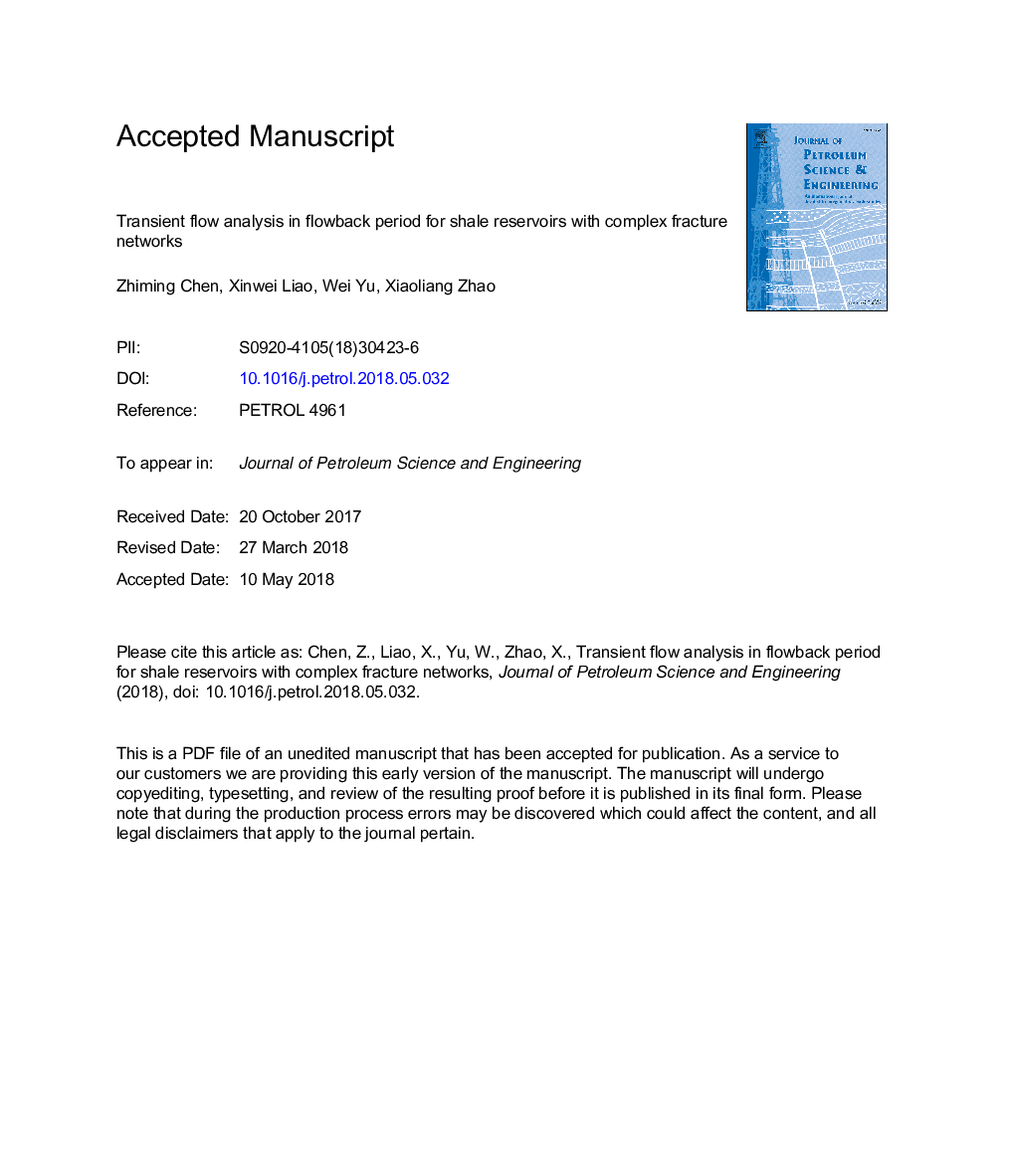| Article ID | Journal | Published Year | Pages | File Type |
|---|---|---|---|---|
| 8124498 | Journal of Petroleum Science and Engineering | 2018 | 38 Pages |
Abstract
Model developments for transient analysis of fractured horizontal wells have gained tremendous attention in shale reservoirs, especially, during the flowback period. However, the existing models so far have rarely considered two-phase flow and complex fracture networks. To improve this situation, in this work, we present a comprehensively semianalytical two-phase flow model. Two fluids simultaneously flow in the matrix and fracture networks. By iteratively correcting the relative permeability to the phases, we incorporate the two-phase flow into fracture model. Complex fracture networks with arbitrary geometries are described and the fluid flow interplays at fracture intersections are eliminated by mass balance equation. The model solution is obtained by using Laplace transform inversion, and it is verified by performing a case study with numerical simulators. Our results show that there exist two distinct flow regimes: fluid feed and pseudo-boundary dominated flow (PBDF), which is generated by the permeability contrast between fracture networks and matrix. We also investigate the impacts of some key reservoir and fracture properties on the characteristics of the two-phase productivity index. Results indicate that the two-phase productivity index increases with an increase in initial water saturation. Furthermore, it is found that during the PBDF, different fracture-network parameters have various constant productivity indexes, providing an efficient tool to characterize the fracture networks. Based on that, we apply the model to estimate the fracture networks of a well in CJ formation from China with flowback data and micro seismic data, which provides an efficient technique to estimate the fracture parameters during the flowback period.
Related Topics
Physical Sciences and Engineering
Earth and Planetary Sciences
Economic Geology
Authors
Zhiming Chen, Xinwei Liao, Wei Yu, Xiaoliang Zhao,
